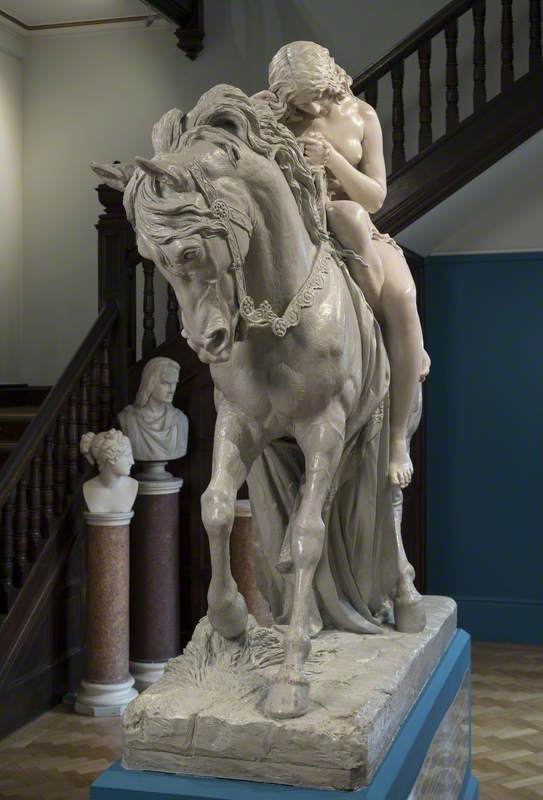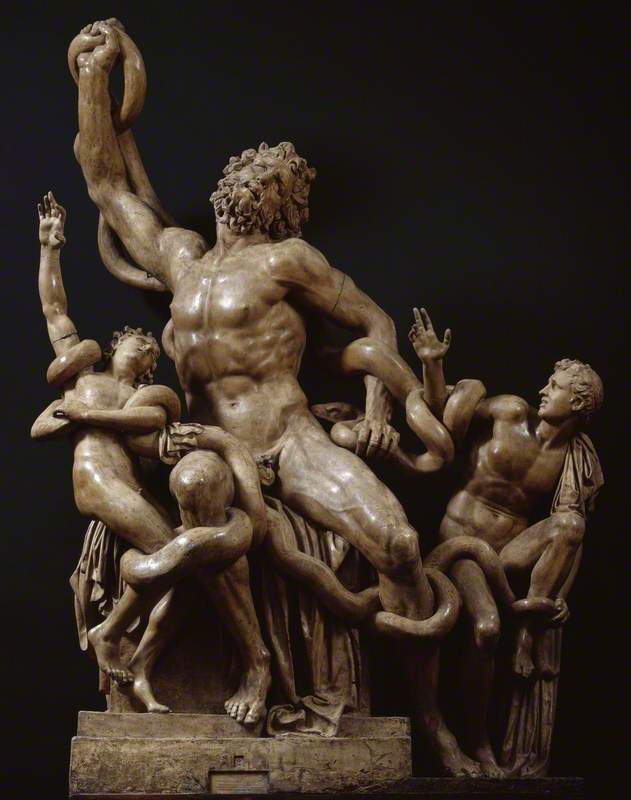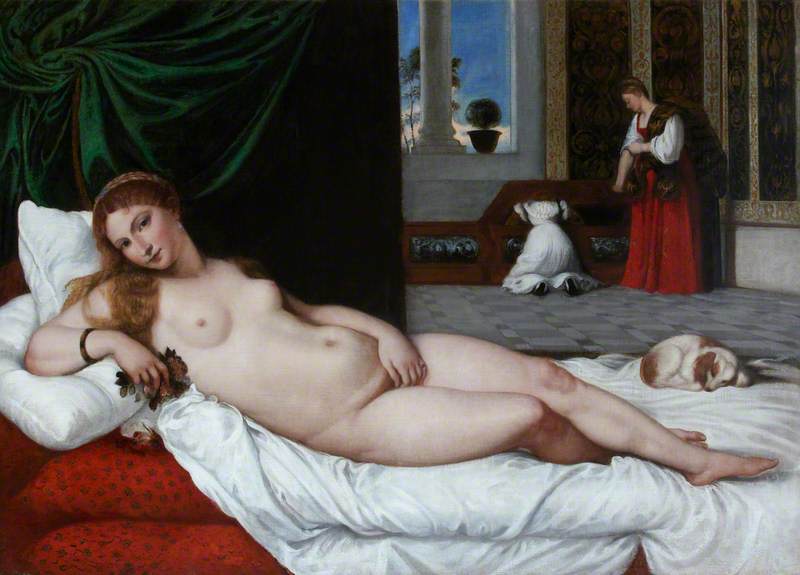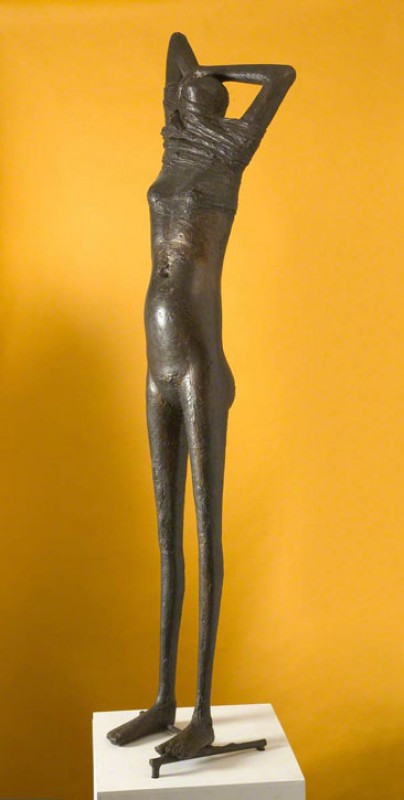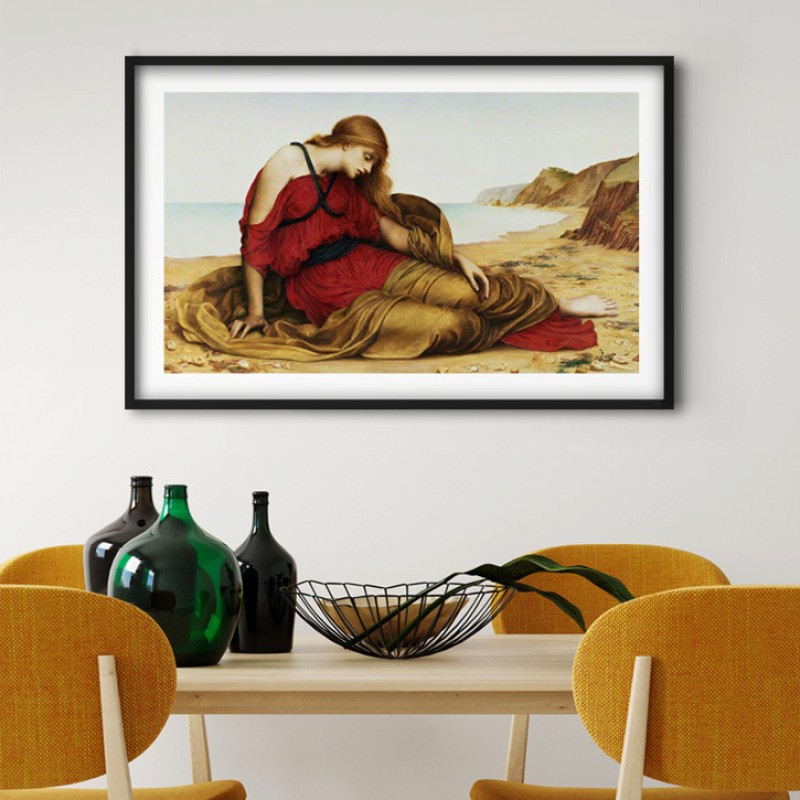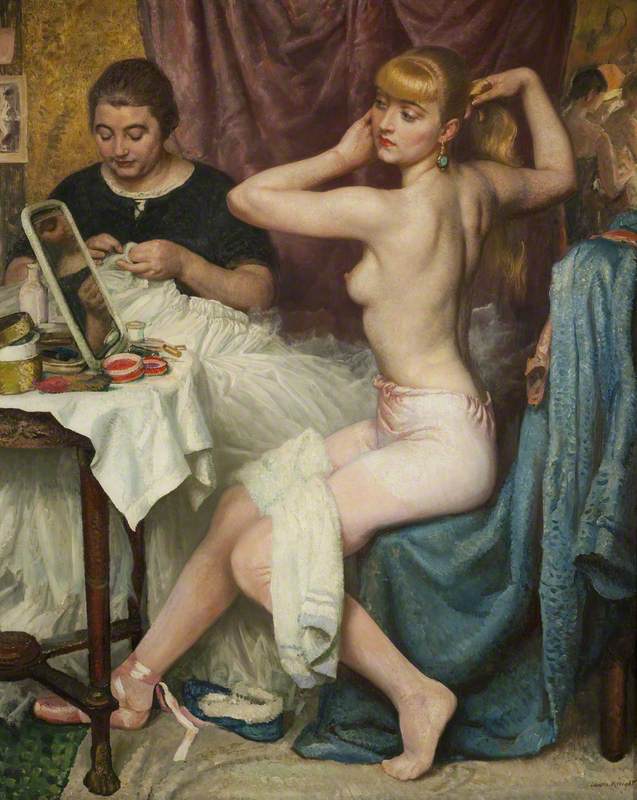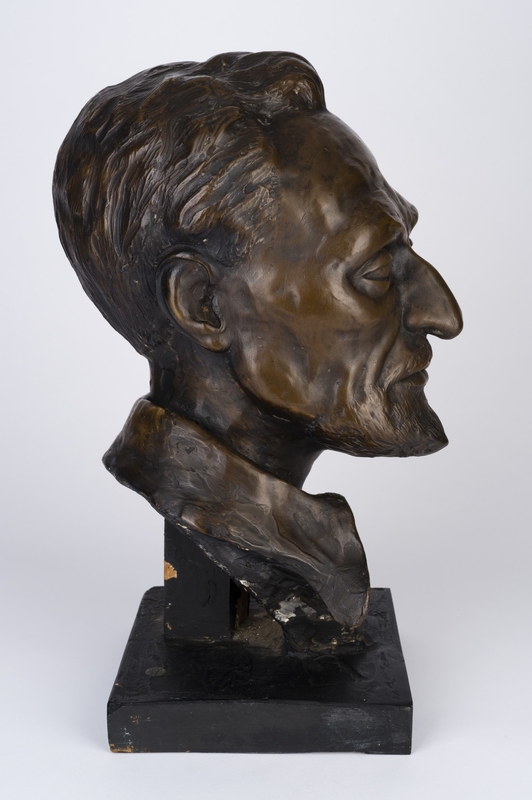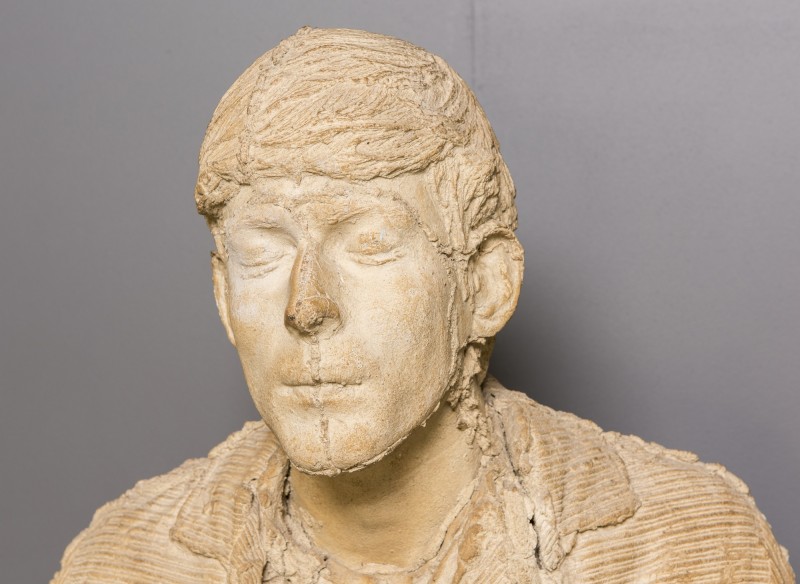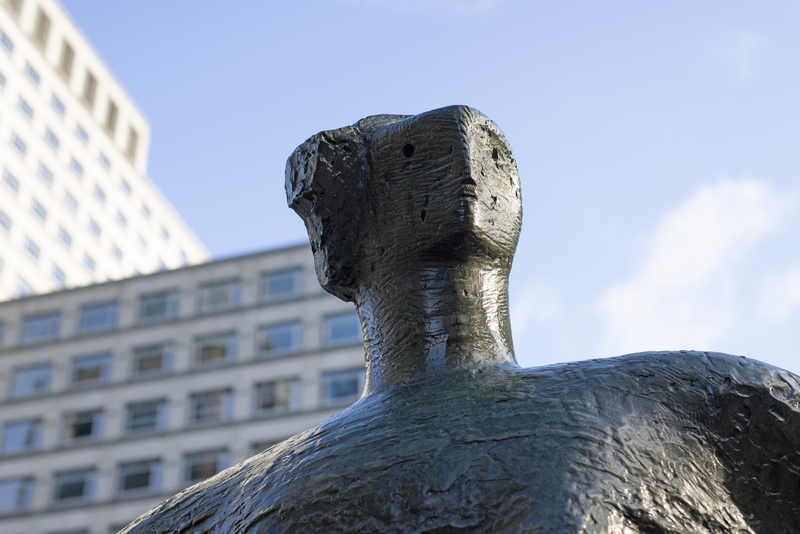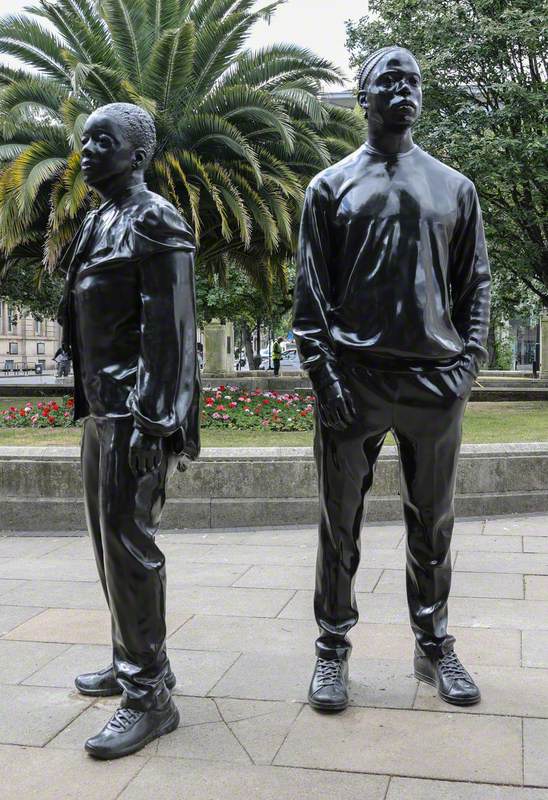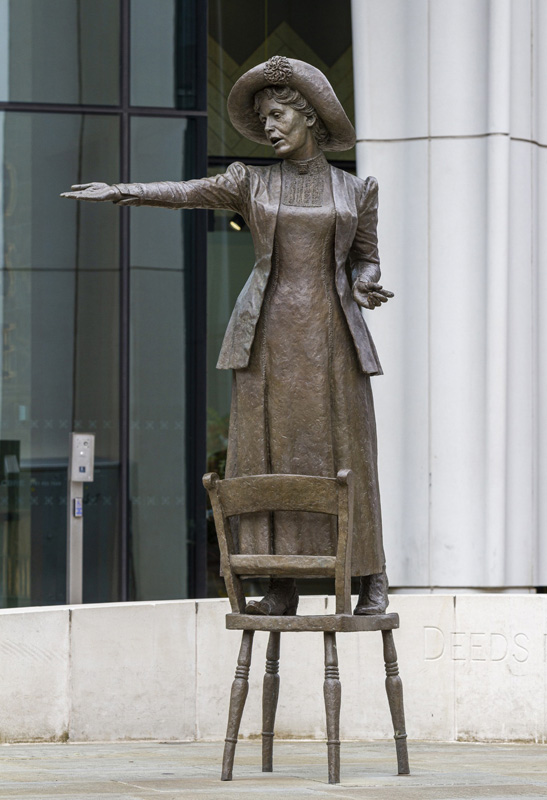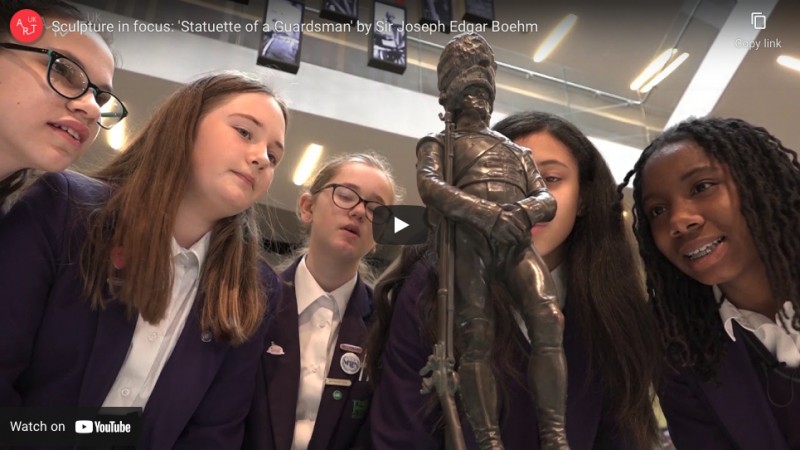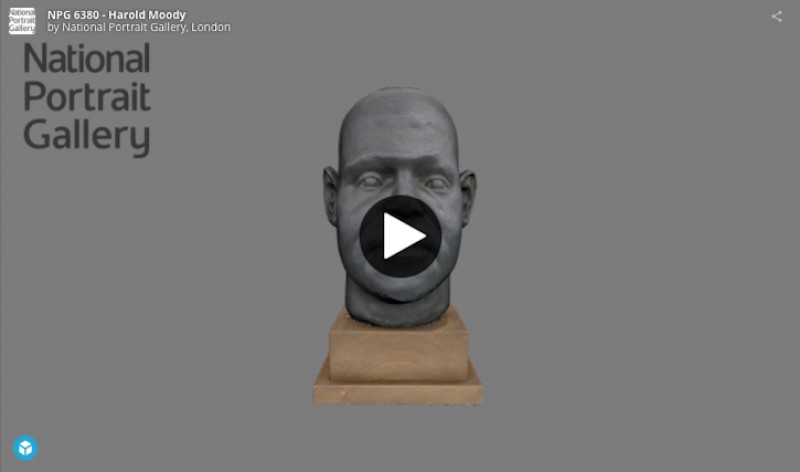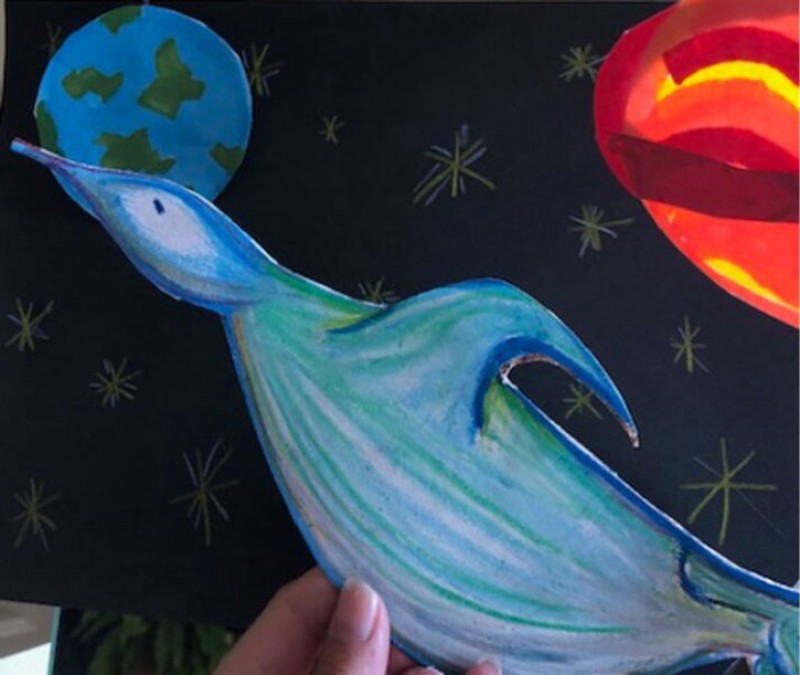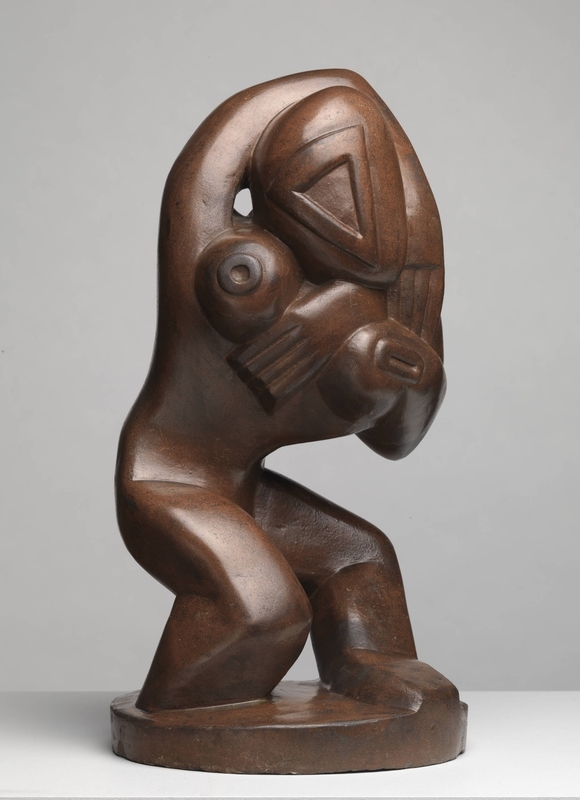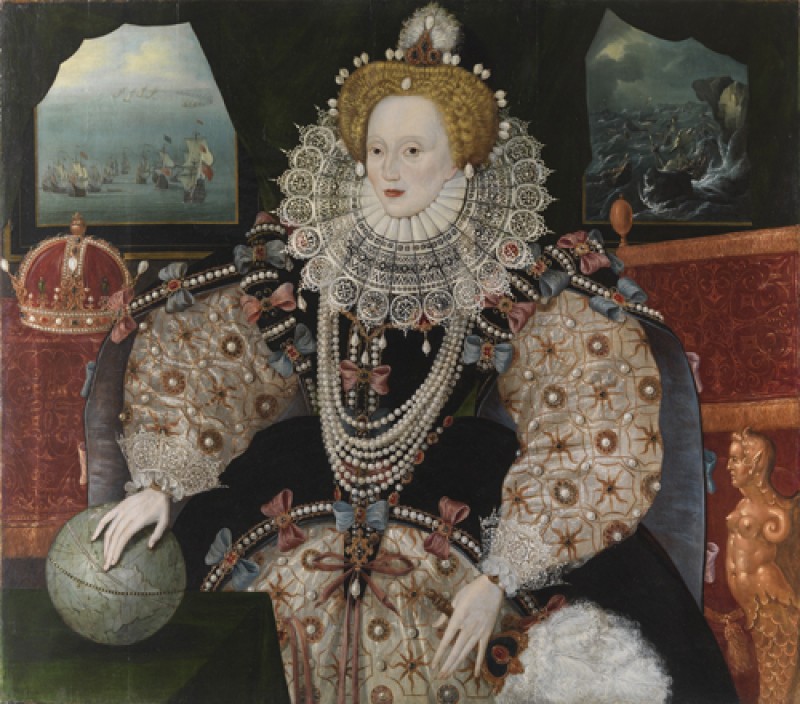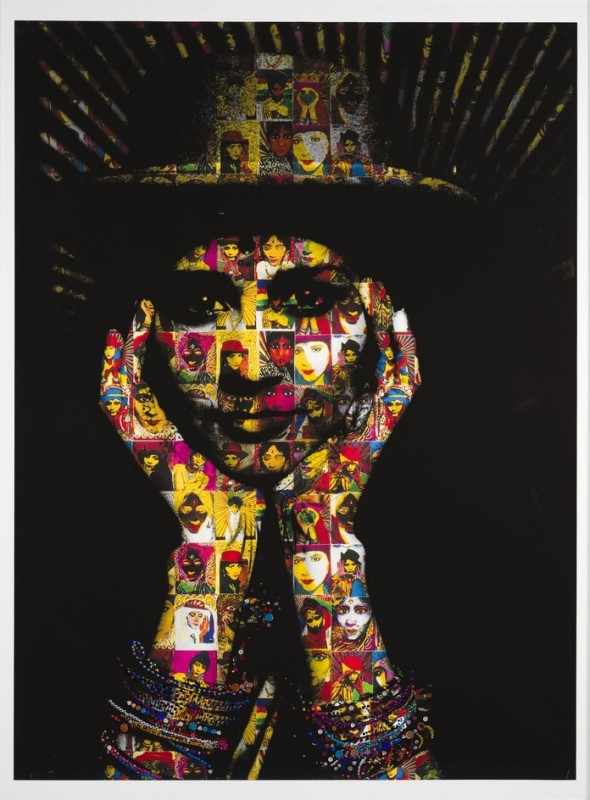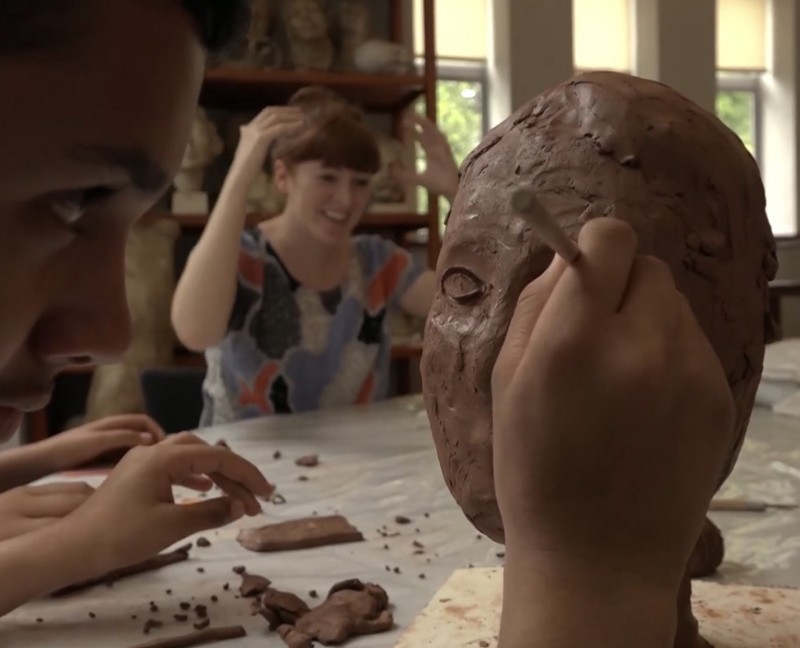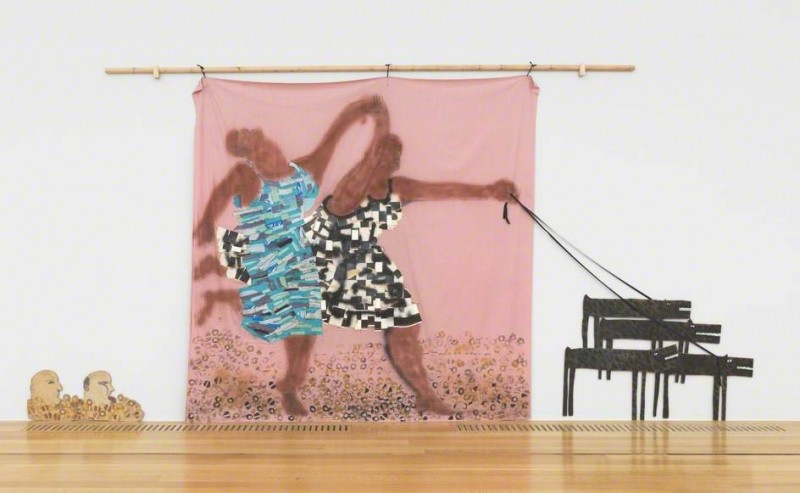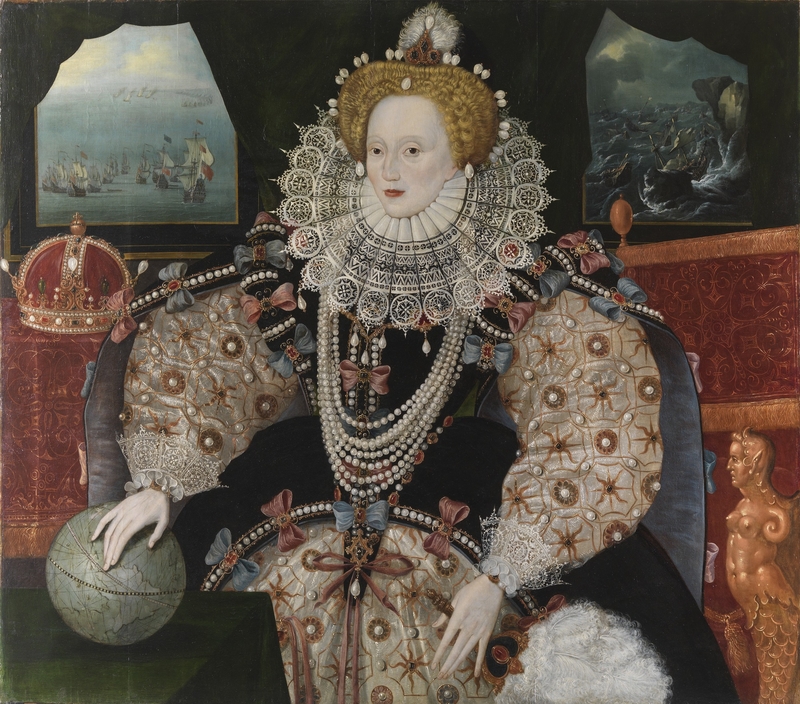'Lady Godiva'
This four-minute audio clip describes the sculpture Lady Godiva by John Thomas (1813–1862).
Full audio description text
This is a plaster sculpture of a naked young woman, sitting side-saddle on a horse, which stands on cobbled ground. Lady Godiva was created by realist sculptor John Thomas in 1861, and is one of the most iconic works in Maidstone Museum's collection. The sculpture is slightly larger than life-size and mounted on a plinth almost a metre high. As a result, both the figure and the horse appear to look down on us.
The plaster has been painted in very muted tones. Godiva's entire body and curly hair, which coils down the full length of her back, are pale cream or ivory, reflecting her skin tone. The horse and ground beneath are painted a light green-grey. The use of just two colours in this way makes the figure and the horse appear as two distinct subjects within the piece.
The work is intricately detailed and has a sense of life and movement. Godiva sits gracefully with her legs hanging down the left side of the animal. While the left leg is loose and relaxed, her right leg is crossed beneath it, the toes of her right foot clasping her left calf, to help steady her balance.
Her head is bowed in modesty and her right hand holds a curtain of her loosely braided hair, which obscures the right side of her face. Her left hand elegantly holds the horse's decorative reigns and a lock of her hair between her fingers. She sits on a large swathe of fabric, deep with folds, which drapes down the horse's sides to the cobblestones beneath.
Godiva is youthful with natural beauty and shapely figure: the Victorian ideal of femininity.
The horse is greatly idealised, a spirited stallion with a raised front hoof, head straining forward and mouth open. Veins protrude on its face and legs, evidence of the animal's exertion. The horse's wild, curly mane and tail mimic the texture of Godiva's hair.
A cube-shaped weight sits on the cobbles by the horse's raised hoof. It has a ring at the top, as if for lifting, and a decorative monogram on the side comprising the letter 'M' with a crown above.
The sculpture depicts the famous legend of Lady Godiva, an eleventh-century Anglo Saxon noblewoman, who made personal sacrifice on behalf of her people. She took pity on the residents of Coventry, who were suffering under the oppressive taxation instated by her husband, Leofric, the Earl of Mercia. She repeatedly appealed to him to remit the tolls. Eventually, he promised to grant her request if she rode naked on horseback through the streets of the town. Godiva consented, and after commanding the townspeople to stay indoors with their windows shuttered, she rode through the town, shielded only by her long hair.
One person disobeyed. A tailor named Tom bore a hole in his shutters, in order to watch Godiva pass. Narratives vary as to what happened to Tom, including being 'blinded by the wrath of Heaven' or killed by the townsfolk. The story is the origin of the term 'peeping Tom'.
Following Godiva's bold endeavour, the Earl kept his word and abolished the taxes.
While Lady Godiva and the Earl of Mercia were real people, this story has been passed down over hundreds of years, likely distorting the facts.
The sculpture was given to Maidstone Museum by the wife of the sculptor John Thomas in 1862, and has been on display since at least 1909.
Art UK and VocalEyes
This audio description was created by VocalEyes for Art UK Sculpture, a national project to document and increase access to the UK's publicly owned sculpture. This description is one of 25 representing sculpture collections across the UK.
